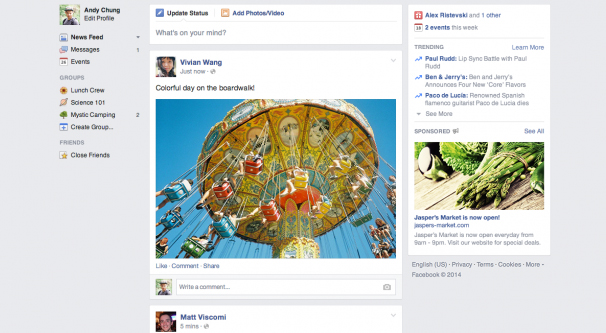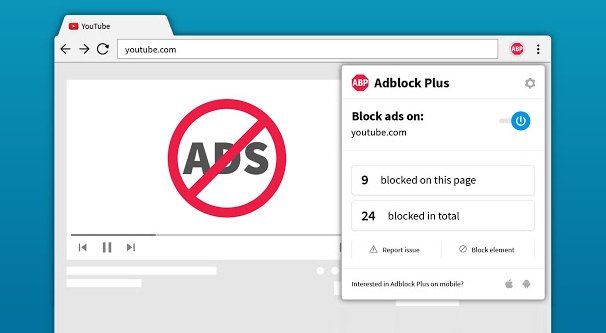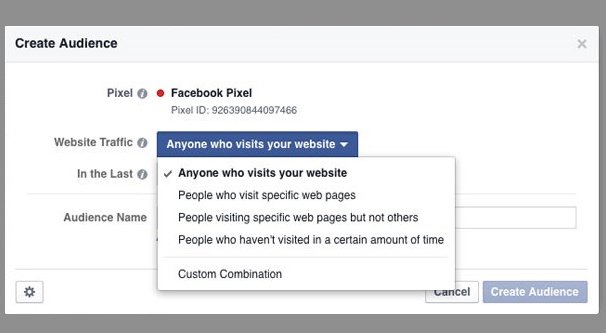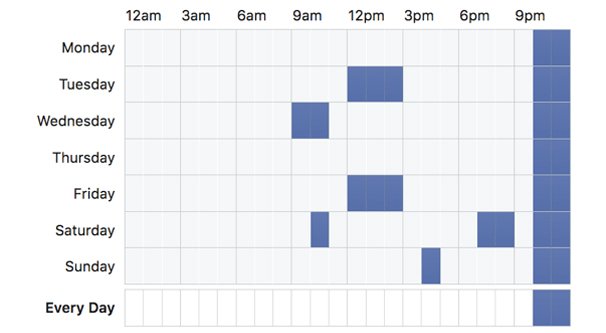 Written by ContentPowered.com
Written by ContentPowered.com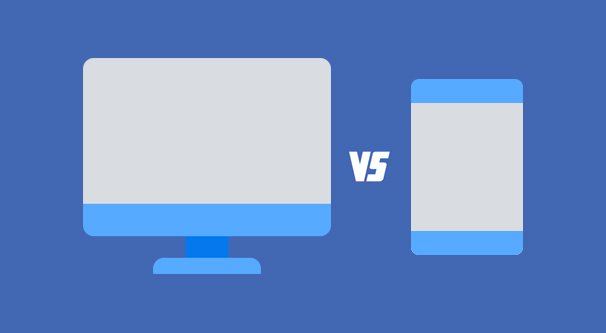
Facebook ads have a ton of different options you can toggle around and play with to get the best results, but one of the core decisions you have to make is regarding placement. Not just news feed versus sidebar versus Instagram, but even deeper than that: do you want your ads to show to people using desktops, or people on mobile devices?
The choice of desktop versus mobile is a big one, and I’m going to do something unusual here. Rather than lead you on with evidence and bring you to my conclusion at the end of this post, I’m going to tell you the answer up front. Which is better: desktop or mobile?
The answer is… neither. Both of them are good, in their own ways, and what matters is how you use them. Thus, the rest of this post is going to help you figure out what purposes each excels at, and how to get the most out of both placements.
Desktop Placement
With Facebook ads, you typically have the option of choosing either a desktop placement, a mobile placement, or a hybrid of both. However, many of the more robust ad formats require you to use both.
Desktop placement allows you to use ads with two different placements; the desktop news feed and the right hand sidebar.
News feed post ads are pretty much the bread and butter of Facebook advertising. They bring in some of the most engagement for standard, cheaper ads, though they fall behind hybrid ad formats like video ads, or specific task-focused ads like marketplace or Messenger ads.
Sidebar ads, meanwhile, tend to be best for awareness, but lack oomph when it comes to conversions. There’s so much going on in the sidebar that it’s easy to overlook ads, and thus they tend to underperform for anything beyond awareness campaigns.
Mobile Placement
Mobile gives you access to the mobile news feed and Facebook’s specific “instant articles” placement. Instant articles are basically a system Facebook used to replace Notes and allow for blog posts and long-form content to be posted to Facebook. These are often branded, so ads can go hand in hand with awareness and branding campaigns.
Mobile news feed ads are the bread and butter of Facebook advertising on mobile just as much as they are on desktop. They’re powerful and can be accurately targeted, which is a very good position to be in.
Keep in mind that both formats also have advertising options for Instagram. I’m largely glossing over Instagram advertising for this post, however. Just bear in mind that Instagram has historically been a heavily mobile-focused platform, so even though you CAN run a desktop placement for it, you’re much better off running mobile or hybrid.
Also remember that mobile users tend to have short attention spans. Many people using mobile devices are waiting for something, which means they’re only filling time until whatever they’re waiting for arrives. Ads can be interrupted, and mobile visits have a 40% higher bounce rate across the board. Not great for lengthy conversion processes, eh?
The Real Trick
Now, the real trick for running Facebook ads is not to consider them on their own. You don’t run one ad, you never run one ad. You run a campaign of ads. That’s why there’s a whole campaign structure to ad networks, you know?
With a campaign structure in mind, you can consider the different purposes of different kinds of ads, and where to best target your users in each of those purposes.
Think about desktop placement for a moment. What are users doing when they’re using a desktop platform?
- They’re at home, browsing the internet in their leisure time.
- They’re at home, actively planning something like a major purchase or vacation.
- They’re at work, actively working or procrastinating from working.
- They may not see ads at all due to an ad blocking service.
Compare this to when users are on mobile devices.
- They’re on a commute to or from work or another destination.
- They’re waiting in a waiting room for an appointment.
- They’re at a restaurant waiting for food.
- They’re out and about, looking for a recommendation for a store or restaurant.
Different placements, then, come attached with different user intents. A restaurant that wants to get people in the door isn’t going to want to advertise on the desktop news feed, because those people are less likely to be able to jump up and go get a meal. Meanwhile, mobile users are more likely to be actively looking for food recommendations, and thus might be looking at those specific kinds of ads more readily. Even if they don’t tap on the ad, they might be willing to go right to the restaurant.
Thus, a restaurant might run ads during the day on a desktop placement to capture awareness of people while they’re at work or in their leisure time. Once the idea of, say, a burger has been seeded in their minds, they might decide they want one while they’re out on the town. They check their mobile feed and see an ad in the mobile news feed for your burger joint, and now they’re on their way. Two different ads, two different purposes, one target user.
Step 1: Use Mobile or Hybrid Ads for Awareness
Mobile ads are great for awareness. Mobile users are more engaged in general. More importantly, mobile ads have two different perks going for them on Facebook.
The first is that mobile ad blockers are much less common than ad blockers on desktop platforms. Mobile users are, at a baseline, much more likely to even see an ad in the first place.
The second is that mobile feeds have less clutter. As you’re scrolling through a feed on a widescreen desktop monitor, you might see two or three ads at any given time, along with all of the other content: Facebook’s recommendations, the sidebars full of group and page information, the Stories, the Messenger functions, and on and on. There’s just so much going on, it’s easy for one ad to get lost unless it really stands out.
Your goal for this step is to build awareness with your ads, which is a good option for both desktop and mobile placements. Mobile placements will get more attention, while desktop placements can be more casual. Simply promoting a post about your brand’s general value proposition can be a good ad here.
Video ads, as a hybrid ad format, can be a great option here. Videos tend to be some of the most promoted and most engaged content on Facebook as a whole. If you can capture attention with a video ad, you’re going to have a much easier time with the rest of your sales funnel.
Engagement from mobile in particular can be quite high. People watch videos, people share posts, and people click through to landing pages on mobile all the time.
Step 2: Use Desktop Ads for Attracting Conversions
Mobile can be good for conversions in a few circumstances, but not across the board. Small products and purchases, purchases in apps, and “bodies in the door” ad conversions can be good for mobile, but otherwise, desktop is the place to be.
One of the biggest driving factors for this is simply the long-term distrust of the mobile platform. People lose phones. People worry about other people unlocking and getting into their phones. People aren’t sure if they want to trust mobile apps or mobile websites with their payment information. I know a lot of people don’t even like using banking apps, or if they do, still don’t like their phones to have credit card information stored in them.
All of this means that, when you want to actually get that conversion, desktop is the platform of choice.
During the day, during those commutes and those waiting periods, your mobile ads are getting the idea of your brand and your product into the minds of the people who might be interested in converting later on.
The key here is to use retargeting advertisements. You’re not just blinding targeting people with your desktop ads, you’re building up an audience with your mobile ads and explicitly targeting the people who clicked on, engaged with, watched videos of, or otherwise took some action with your mobile ads.
Retargeting is the key to any good ad campaign to get those people who slip away. Some people are going to convert with your initial mobile ads, and that’s great, but that’s not the point. The point is to separate the people who might have a little interest from the people who have none at all.
With this retargeting audience, you can capture their interest and guide them deeper in your sales funnel. Depending on your product and how much of a decision it is to purchase, you may not be able to get those conversions directly, but you can drag them deeper into your clutches. Buying a video game is a much different decision than buying a boat, after all.
The key to these successful remarketing desktop ads is timing. You are almost required to use dayparting to make sure that your desktop ads are appearing in front of your retargeted users when they’re actually on their desktops, but more importantly, when they’re able to make a purchase.
This is an interesting situation, actually. A huge proportion of desktop usage is during the day, during work hours, but a lot of conversions don’t happen until later in the day. Why is that? It’s simple; people at work might not be able to make a purchase. They might want to get home and talk to their families, or they might not want to put their financial information into a computer monitored by their job, or they might just not want to get caught browsing non-work-related content at work.
Of course, this is all turned on its head if you’re a B2B company and the people who are most likely to make a purchase are going to be doing so during work hours. As with all marketing advice, remember that nothing is one-size-fits-all. You need to figure out the specific situation you’re in and how to take advantage of it.
Alternative Hybrid Options
Remember that a lot of ad placements only work if you’re allowing both desktop and mobile. Or, rather, you don’t have the choice. For example, Messenger ads only work with people who are using Messenger with your brand, and since Messenger is both on desktop and mobile, you don’t get to segment. Messenger ads are great if you’re frequently contacted, but that’s a whole other consideration.
Above all, the best tip I can give you is to avoid restricting yourself. Most of the time, there’s no reason to do just mobile or just desktop. If you’re selling a mobile app, sure, or if you’re selling some huge item most people aren’t going to want to make on a mobile device, then that’s a specific consideration to keep in mind. Otherwise, use a hybrid approach.
At the end of the day, the desktop and mobile divide isn’t as important as the placement within them, be it marketplace, Messenger, news feed, or audience network. Choose whichever works for the goal of your ads. Determine which audience segment you’re aiming to reach, which part of the sales funnel they’re in, and what messaging will work best to reach them.
